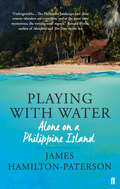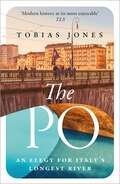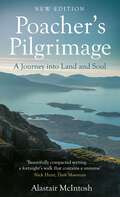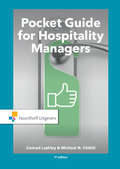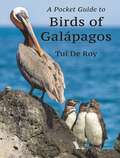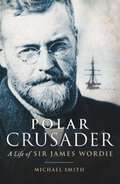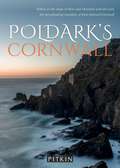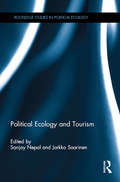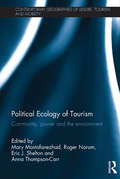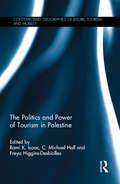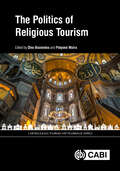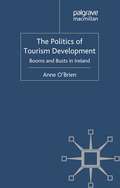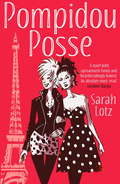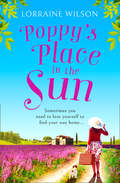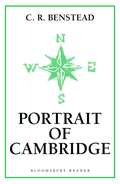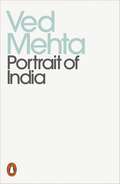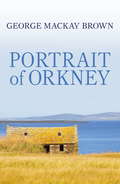- Table View
- List View
Playing With Water: Alone on a Philippine Island
by James Hamilton-PatersonA classic of travel writing. For many years award-winning writer James Hamilton-Paterson spent a third of each year on an otherwise uninhabited Philippine island, spear-fishing for survival. Playing with Water tells us why he did. Yet it also gives an account of life in that class-bound country as a whole. For it is in places like this rather than Manila of the international news reports that the underlying political and cultural reality of the Philippines may be seen.
The Po: An Elegy for Italy's Longest River
by Tobias JonesA captivating journey along the iconic River Po and through Italian history, society and culture. 'Delightful... A wonderful cornucopia of history' TLS 'Uncovers the Po's fascinating history' Guardian 'Tobias Jones is the perfect guide' SpectatorThe Po is the longest river in Italy, travelling for 652 kilometres from one end of the country to the other. It rises by the French border in the Alps and meanders the width of the entire peninsula to the Adriatic Sea in the east. Flowing next to many of Italy's most exquisite cities – Ferrara, Mantova, Parma, Cremona, Pavia and Torino – the river is a part of the national psyche, as iconic to Italy as the Thames is to England or the Mississippi to the USA.For millennia, the Po was a vital trading route and a valuable source of tax revenue, fiercely fought over by rival powers. It was also moat protecting Italy from invaders from the north, from Hannibal to Holy Roman Emperors. It breached its banks so frequently that its floodplain swamps were homes to outlaws and itinerants, to eccentrics and experimental communities. But as humans radically altered the river's hydrology, those floodplains became important places of major industries and agricultures, the source of bricks, timber, silk, hemp, cement, caviar, mint, flour and risotto rice.Tobias Jones travels the length of the river against the current, gathering stories of battles, writers, cuisines, entertainers, religious minorities and music. Both an ecological lament and a celebration of the resourcefulness and resilience of the people of the Po, the book opens a window onto a stunning, but now neglected, part of Italy.
Poachers Pilgrimage: A Journey into Land and Soul
by Alastair McIntoshThe islands of the Outer Hebrides are home to some of the most remote and spectacular scenery in the world. They host an astonishing range of mysterious structures – stone circles, beehive dwellings, holy wells and 'temples' from the Celtic era. Over a twelve-day pilgrimage, often in appalling conditions, Alastair McIntosh returns to the islands of his childhood and explores the meaning of these places. Traversing moors and mountains, struggling through torrential rivers, he walks from the most southerly tip of Harris to the northerly Butt of Lewis. The book is a walk through space and time, across a physical landscape and into a spiritual one. As he battled with his own ability to endure some of the toughest terrain in Britain, he met with the healing power of the land and its communities. This is a moving book, a powerful reflection not simply of this extraordinary place and its people met along the way, but of imaginative hope for humankind.
Pocket Guide for Hospitality Managers
by Conrad Lashley Michael N. ChibiliA concise, practical guide that provides the skills and knowledge for current and future managers across the hospitality industry. The book provide a concise resource for all emerging hospitality managers, and for academics preparing students for careers within the hospitality industry.With a ‘how to do’ agenda, the authors offer a practical guide to the skills and knowledge needed by those who will be managing bars, restaurants and hotels in the fast moving hospitality retailing contexts. Written in a non-academic style, this book will be a valuable resource for students and early career managers working in the hospitality sector.
Pocket Guide for Hospitality Managers
by Conrad Lashley Michael N. ChibiliA concise, practical guide that provides the skills and knowledge for current and future managers across the hospitality industry. The book provide a concise resource for all emerging hospitality managers, and for academics preparing students for careers within the hospitality industry.With a ‘how to do’ agenda, the authors offer a practical guide to the skills and knowledge needed by those who will be managing bars, restaurants and hotels in the fast moving hospitality retailing contexts. Written in a non-academic style, this book will be a valuable resource for students and early career managers working in the hospitality sector.
A Pocket Guide to Birds of Galápagos
by Tui De RoyA compact, richly illustrated photographic field guide to all of the birds of Galápagos, from renowned photographer and writer Tui De RoyA lifelong resident of Galápagos, Tui De Roy has been observing, studying, and photographing the islands’ astonishing birdlife for sixty years. In A Pocket Guide to Birds of Galápagos, she distills everything she has learned to create a one-of-a-kind field guide that every birder visiting the archipelago will want to carry with them wherever they go.A compact yet comprehensive combination of field guide and natural history, the book features more than 600 of De Roy’s superb photographs and is packed with detailed, easy-to-access information in bullet-point format. Every resident bird species is fully described and abundantly illustrated, showing different aspects of their life cycle, habitat, and behavior. And the islands’ most iconic bird group—Darwin’s Finches—is given special attention. With precise descriptions including plumage and beak variations, the book corrects many common identification errors about this group.Unique in design and content, A Pocket Guide to Birds of Galápagos is a must-have for all wildlife enthusiasts traveling to this fabled archipelago—and anyone who wants to better understand its spectacular birds.A compact yet comprehensive photographic identification guideCovers all resident species and frequent migrantsFeatures more than 600 of Tui De Roy’s superb color photographsIncludes distribution maps and easy-to-find information for identifying and understanding each species, including life cycles, habits, range, and conservation status
Poems for Travellers (Macmillan Collector's Library #212)
by Gaby MorganPoems for Travellers transports the reader to lands far and near in the company of some of our greatest poets such as Walt Whitman, John Keats and Christina Rossetti.Part of the Macmillan Collectors Library series, featuring expert introductions for your favourite classics.As internationally acclaimed author Paul Theroux writes in his introduction, ‘Here is a collection of travel poetry composed by real travellers, weekending tourists, feverish fantasists, bluffers, dreamers, brave adventurers and resolute stay-at-homes. It succeeds in what poetry does best – inspires and consoles, reminds us of who we are, where we’ve been, and where we might want to go next.’
Polar Crusader: A Life of Sir James Wordie
by Michael SmithSir James Wordie lead arduous expeditions well into his forties, while building his reputation as an academic and mentor. He rose to be President of the Royal Geographical Society. This book captures the drama of an extraordinary life lived at the edge, establishing James Wordie in his rightful place in the pantheon of great British explorers.
Poldark's Cornwall (Location Guides #5)
by Gill KnappettAre you longing to know where your favourite scenes in Poldark were filmed? Or discover the secrets behind the derelict mines and perfect, unspoiled beaches? Pitkin's latest addition to the Film Locations series allows you the inside knowledge to go behind the scenes and follow in the footsteps of Ross and Demelza. Travel back in time and join them along the windswept cliffs, rugged coastline and untouched, pristine beaches. From Padstow to the Lizard peninsula, Cornwall takes centre stage, providing the breath-taking backdrop that brings the series to life. The latest awarding-winning adaptation of Winston Graham's Poldark, produced by the BBC, has captured the hearts of millions of viewers worldwide. As the third series returns to our screens this summer, and with a forth series underway, tourists from all over the globe are flocking to the deepest corners of the UK's southwestern tip. Over the last three years the series has brought the region's rich heritage back to life, with tales of smugglers, shipwrecks and the secrets of the mines gripping viewer's imaginations. Visit the Poldark family mines at Agnes Head or Levant Mine, a World Heritage Site. Gallop along the clifftops of Chapel Porth, and learn of famous shipwrecks at Gunwalloe. If it's the glistening, azur waters you're after, don't miss Holywell Bay, Cornwall's largest stretch of coastline, which becomes the Warleggans private beach in series two. Cornwall has been an inspiration for writer's, film directors and artists alike for centuries, and Eleanor Tomlinson (Demelza) sums up its magic. "So much of the piece came alive when we were filming in Cornwall and everyone found their character in the outdoors." Britain's best kept secret is yours to enjoy.
Police Car (large print)
by RnibThe police car is seen from the side, with only two of its four wheels showing at the bottom of the page. There is a locator dot shown, which will be at the top left of the page when the image is the right way up. The front (bonnet) of the car is at the left, and the rear (boot) at the right. The bumpers stick out slightly at the lower front and rear of the car. Above the front bumper is one headlight. Just to the right and slightly below this, the emergency vehicle reflective strip runs the length of the car, with one of the tail lights just above and to the right of it at the top of the boot. In the centre of the image, to the left is one front door and one rear door to the right. Each has a door handle just above the reflective strip, with a window above that. The wing mirror is shown at the lower left of the front window. At the top of the image, the blue emergency light is in the middle of the car's roof, with a tall aerial to its right.
Police Car (UEB Contracted)
by Rnib BookshareThe police car is seen from the side, with only two of its four wheels showing at the bottom of the page. There is a locator dot shown, which will be at the top left of the page when the image is the right way up. The front (bonnet) of the car is at the left, and the rear (boot) at the right. The bumpers stick out slightly at the lower front and rear of the car. Above the front bumper is one headlight. Just to the right and slightly below this, the emergency vehicle reflective strip runs the length of the car, with one of the tail lights just above and to the right of it at the top of the boot. In the centre of the image, to the left is one front door and one rear door to the right. Each has a door handle just above the reflective strip, with a window above that. The wing mirror is shown at the lower left of the front window. At the top of the image, the blue emergency light is in the middle of the car's roof, with a tall aerial to its right.
Police Car (UEB uncontracted)
by Rnib BookshareThe police car is seen from the side, with only two of its four wheels showing at the bottom of the page. There is a locator dot shown, which will be at the top left of the page when the image is the right way up. The front (bonnet) of the car is at the left, and the rear (boot) at the right. The bumpers stick out slightly at the lower front and rear of the car. Above the front bumper is one headlight. Just to the right and slightly below this, the emergency vehicle reflective strip runs the length of the car, with one of the tail lights just above and to the right of it at the top of the boot. In the centre of the image, to the left is one front door and one rear door to the right. Each has a door handle just above the reflective strip, with a window above that. The wing mirror is shown at the lower left of the front window. At the top of the image, the blue emergency light is in the middle of the car's roof, with a tall aerial to its right.
Political Ecology and Tourism (Routledge Studies in Political Ecology)
by Sanjay Kumar Nepal Jarkko Saarinen Sanjay NepalPolitical ecology explicitly addresses the relations between the social and the natural, arguing that social and environmental conditions are deeply and inextricably linked. Its emphasis on the material state of nature as the outcome of political processes, as well as the construction and understanding of nature itself as political is greatly relevant to tourism. Very few tourism scholars have used political ecology as a lens to examine tourism-centric natural resource management issues. This book brings together experts in the field, with a foreword from Piers Blaikie, to provide a global exploration of the application of political ecology to tourism. It addresses the underlying issues of power, ownership, and policies that determine the ways in which tourism development decisions are made and implemented. Furthermore, contributions document the complex array of relationships between tourism stakeholders, including indigenous communities, and multiple scales of potential conflicts and compromises. This groundbreaking book covers 15 contributions organized around four cross-cutting themes of communities and livelihoods; class, representation, and power; dispossession and displacement; and, environmental justice and community empowerment. This book will be of great interest to students and scholars in tourism, geography, anthropology, sociology, environmental studies, and natural resources management.
Political Ecology and Tourism (Routledge Studies in Political Ecology)
by Sanjay Nepal Jarkko SaarinenPolitical ecology explicitly addresses the relations between the social and the natural, arguing that social and environmental conditions are deeply and inextricably linked. Its emphasis on the material state of nature as the outcome of political processes, as well as the construction and understanding of nature itself as political is greatly relevant to tourism. Very few tourism scholars have used political ecology as a lens to examine tourism-centric natural resource management issues. This book brings together experts in the field, with a foreword from Piers Blaikie, to provide a global exploration of the application of political ecology to tourism. It addresses the underlying issues of power, ownership, and policies that determine the ways in which tourism development decisions are made and implemented. Furthermore, contributions document the complex array of relationships between tourism stakeholders, including indigenous communities, and multiple scales of potential conflicts and compromises. This groundbreaking book covers 15 contributions organized around four cross-cutting themes of communities and livelihoods; class, representation, and power; dispossession and displacement; and, environmental justice and community empowerment. This book will be of great interest to students and scholars in tourism, geography, anthropology, sociology, environmental studies, and natural resources management.
Political Ecology of Tourism: Community, power and the environment (Contemporary Geographies of Leisure, Tourism and Mobility)
by Mary Mostafanezhad Roger Norum Eric J. Shelton Anna Thompson-CarrWhy has political ecology been assigned so little attention in tourism studies, despite its broad and critical interrogation of environment and politics? As the first full-length treatment of a political ecology of tourism, the collection addresses this lacuna and calls for the further establishment of this emerging interdisciplinary subfield. Drawing on recent trends in geography, anthropology, and environmental and tourism studies, Political Ecology of Tourism: Communities, Power and the Environment employs a political ecology approach to the analysis of tourism through three interrelated themes: Communities and Power, Conservation and Control, and Development and Conflict. While geographically broad in scope—with chapters that span Central and South America to Africa, and South, Southeast, and East Asia to Europe and Greenland—the collection illustrates how tourism-related environmental challenges are shared across prodigious geographical distances, while also attending to the nuanced ways they materialize in local contexts and therefore demand the historically situated, place-based and multi-scalar approach of political ecology. This collection advances our understanding of the role of political, economic and environmental concerns in tourism practice. It offers readers a political ecology framework from which to address tourism-related issues and themes such as development, identity politics, environmental subjectivities, environmental degradation, land and resources conflict, and indigenous ecologies. Finally, the collection is bookended by a pair of essays from two of the most distinguished scholars working in the subfield: Rosaleen Duffy (foreword) and James Igoe (afterword). This collection will be valuable reading for scholars and practitioners alike who share a critical interest in the intersection of tourism, politics and the environment
Political Ecology of Tourism: Community, power and the environment (Contemporary Geographies of Leisure, Tourism and Mobility)
by Mary Mostafanezhad Roger Norum Eric J. Shelton Anna Thompson-CarrWhy has political ecology been assigned so little attention in tourism studies, despite its broad and critical interrogation of environment and politics? As the first full-length treatment of a political ecology of tourism, the collection addresses this lacuna and calls for the further establishment of this emerging interdisciplinary subfield. Drawing on recent trends in geography, anthropology, and environmental and tourism studies, Political Ecology of Tourism: Communities, Power and the Environment employs a political ecology approach to the analysis of tourism through three interrelated themes: Communities and Power, Conservation and Control, and Development and Conflict. While geographically broad in scope—with chapters that span Central and South America to Africa, and South, Southeast, and East Asia to Europe and Greenland—the collection illustrates how tourism-related environmental challenges are shared across prodigious geographical distances, while also attending to the nuanced ways they materialize in local contexts and therefore demand the historically situated, place-based and multi-scalar approach of political ecology. This collection advances our understanding of the role of political, economic and environmental concerns in tourism practice. It offers readers a political ecology framework from which to address tourism-related issues and themes such as development, identity politics, environmental subjectivities, environmental degradation, land and resources conflict, and indigenous ecologies. Finally, the collection is bookended by a pair of essays from two of the most distinguished scholars working in the subfield: Rosaleen Duffy (foreword) and James Igoe (afterword). This collection will be valuable reading for scholars and practitioners alike who share a critical interest in the intersection of tourism, politics and the environment
The Politics and Power of Tourism in Palestine (Contemporary Geographies of Leisure, Tourism and Mobility)
by C. Michael Hall Rami K. Isaac Freya Higgins-DesbiollesTourism in Palestine has been receiving an increasingly important profile given its economic and religious importance and the significant role it plays in Israeli-Palestinian relations, representation of Palestinian statehood and identity, and wider Middle Eastern politics. Nevertheless, Palestine, like much of the Middle East as a whole, remains extremely underrepresented in tourism literature. This title aims to fill this void by being the first book dedicated to exploring the significance of tourism in relationship to Palestine. The book examines the role of tourism in Palestine at three main levels. First, it provides an overview of destination management and marketing issues for the tourism industry in Palestine and addresses not only the visitor markets and the economic significance of tourism but also the realities of the difficulties of destination management, marketing and promotion of the Palestinian state. Second, it provides a series chapters and case studies that interrogate not only the various forms of tourism in Palestine but also its economic, social, environmental and spiritual importance. This section also conveys a dimension to tourism in Palestine that is not usually appreciated in the Western mainstream media. The third section indicates the way in which tourism in Palestine highlights broader questions and debates in tourism studies and the way in which travel in the region is framed in wider discourses. A significant dimension of the book is the attention it gives to the different voices of stakeholders in Palestinian tourism at varying levels of scale. This timely volume will offer the reader significant insight into the challenges and issues of tourism in this area now and in the future. It will benefit those interested in tourism, Middle East studies, politics, economics, development studies and geography.
The Politics and Power of Tourism in Palestine (Contemporary Geographies of Leisure, Tourism and Mobility)
by C. Michael Hall Rami K. Isaac Freya Higgins-DesbiollesTourism in Palestine has been receiving an increasingly important profile given its economic and religious importance and the significant role it plays in Israeli-Palestinian relations, representation of Palestinian statehood and identity, and wider Middle Eastern politics. Nevertheless, Palestine, like much of the Middle East as a whole, remains extremely underrepresented in tourism literature. This title aims to fill this void by being the first book dedicated to exploring the significance of tourism in relationship to Palestine. The book examines the role of tourism in Palestine at three main levels. First, it provides an overview of destination management and marketing issues for the tourism industry in Palestine and addresses not only the visitor markets and the economic significance of tourism but also the realities of the difficulties of destination management, marketing and promotion of the Palestinian state. Second, it provides a series chapters and case studies that interrogate not only the various forms of tourism in Palestine but also its economic, social, environmental and spiritual importance. This section also conveys a dimension to tourism in Palestine that is not usually appreciated in the Western mainstream media. The third section indicates the way in which tourism in Palestine highlights broader questions and debates in tourism studies and the way in which travel in the region is framed in wider discourses. A significant dimension of the book is the attention it gives to the different voices of stakeholders in Palestinian tourism at varying levels of scale. This timely volume will offer the reader significant insight into the challenges and issues of tourism in this area now and in the future. It will benefit those interested in tourism, Middle East studies, politics, economics, development studies and geography.
The Politics of Religious Tourism (CABI Religious Tourism and Pilgrimage Series)
by Silvia Aulet Serrallonga Valentina Castronuovo Stefania Cerutti Charlotte Lee Panagiota Manoli Dane Munro Dimitrios Mylonopoulos Dr Daniel H Olsen Masahiro Omae Maria Angelica Orozco Jorge Olleros-Rodriguez Spyridon Parthenis Dr Elisa Piva Xosé M. Santos Francisco Singul Associate Professor Anna TronoAddressing a dearth of literature in this area, this book provides a comprehensive overview and framework of study of the politics of religious tourism. Existing work shows awareness that politics is present but the approach has been one of benign neglect, and/or a priori assumptions about the role of politics in the management of sacred sites. Previous literature is fragmented into various perspectives and approaches that best serve different disciplinary interests. By understanding the politics of religious tourism through the various perspectives and approaches from the discipline of political science, law, public policy, and other fields, this book: · Focuses on how power is exercised regarding religious tourism. · Looks at the governing institutions of religious tourism including the role of relevant governmental bodies such as ministries of tourism or national tourism boards, ministries of religion and/or culture. · Covers the role and influence of religious governing institutions, such as state-supported church/mosque officials, and universities. This book will be of great interest to researchers and students of religious tourism, pilgrimage, as well as related subjects such as political science, economics, sociology, tourism, law studies, and religious studies.
The Politics of Tourism Development: Booms and Busts in Ireland
by A. O'BrienMoving beyond both tourism and politics literatures' current understandings of how tourism is developed, this book offers an original theory of interlocking regimes to account for the manner in which public and private bodies either facilitate or prevent development within tourism.
Pompidou Posse
by Sarah LotzYou're seventeen. One night, more or less by accident, you set fire to a garden shed.Naturally, you pack up and run off to Paris, certain you can make enough money off your art to get by. You're young, you're pretty, you're full of life, and you have your best friend in all the world by your side.What could possibly go wrong?Sarah Lotz's hilarious, heartbreaking first novel has only ever been published in South Africa - Hodder & Stoughton are proud to be brining it to a world-wide audience, newly edited and with an all-new cover.
Poppy’s Place in the Sun (A French Escape #1)
by Lorraine Wilson‘She had me at Bonjour! Warm, funny, deliciously French…this lovely story filled my heart with sunshine’ Jane Linfoot Sometimes you need to lose yourself to find your way home…
Portrait of Cambridge
by C. R. BensteadThe story of Cambridge is one of curious conflict: an unrelenting struggle for independence by a squalid fenland settlement, which entirely changed its purpose as, down the centuries, a great University grew in its midst. Yet it was this unwelcome intruder, seen today as an island of ancient glory in a surge of modern expansion, that makes the City of Cambridge known to the world. The coming of the "clerks"; the early hostels and colleges; the problem of the King's Ditch; the limitations of a medieval education, and of learning itself until recent years; the "rod" and its application; the tremendous religious emphasis, and compulsion, that endured until the last century; the dissolution of the religious houses; the Reformation and its martyrs; the threats to the University's very existence; Cambridge and Cromwell, himself a pensioner of Sidney Sussex; the seemingly unending strife between town and gown, and the hazardous office of Mayor; the unending procession of poets and scientists, headed by Milton and Newton, and of great men in every walk of life; the colleges, and their independence, in the modern age of reform, not least in architecture; and even the tidal phenomenon of the undergraduates' hair, once restricted by clerical tonsure; it is in terms of these factors, grave and gay, that the story of Cambridge is told.
Portrait of India
by Ved MehtaReturning to 1960s' India after decades beyond its borders, Ved Mehta explores his native country with two sets of eyes: those of the man educated in the West, and those of the child raised under the Raj. Travelling from the Himalayas in the east to Kerala in the west, Ved Mehta's observations and insights into India and some of its most interesting figures - including Indira Gandhi, Jaya Prakash Narayan and Satyajit Ray - create one of the twentieth century's most thought-provoking travel memoirs.
Portrait of Orkney
by George Mackay BrownPortrait of Orkney is a personal account of a people, their history and their way of life, and of a landscape that has shaped them, and been shaped by them.
